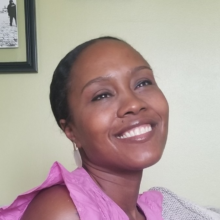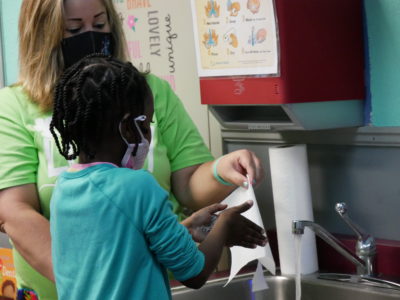

A new normal for public schools in North Carolina begins with asking Black students and their families: What are your dreams for yourself? What are your hopes and aspirations? This may be one way to inform school districts’ reopening plans and interventions designed to address the academic opportunity gap in North Carolina.
A report released by Village of Wisdom lays out these dreams. The report suggests that Black students, their parents, and their teachers dream of seeing schools where Black students feel affirmed and valued. I would argue that if public schools began here, they would learn that Black students want to be successful, they want to take care of their families, and they want respect.
For too long, public schools have rarely responded to the dreams of Black students, their families, and their communities. Even the dream speech by Martin Luther King, Jr. expressed more than desegregation. The speech went beyond a dream of seeing Black children play with white children. It spoke about Black communities existing in a country with a sense of dignity and having justice. We need a new normal — a normal that listens to the dreams of Black students and their families.
Despite national data over the last decade demonstrating a link between increased school suspension and learning gaps, school dropout, and increased risk for incarceration, North Carolina continues to disproportionately suspend Black students and, more specifically, Black males. In the 2019-20 school year, Black male students had the highest rate of short-term suspensions in public schools. Most of these suspensions were due to “unacceptable behavior.”
In the report released by Village of Wisdom, a teacher talks about a student being referred for punishment when another teacher misconstrued the embracing of two Black students as a fight. Too often and for too long, teachers have evaluated the expressions of Black students as “unacceptable behavior.” For too long, teachers have misconstrued the expressions of Black students as disrespectful, combative, and insubordinate. Black students dream that schools will one day embrace their Blackness without fear, and schools will respect and value them.
According to the report, teachers and parents want schools to allow Black students to live up to their full potential. Black students and their families are not alone in these dreams — some teachers also want these dreams to come true. Black students and their families have had to dream amid fighting for respect and equal treatment in public schools. These communities have had to continue to ask school districts to “do right by them.” Now is the time to listen.
School districts across North Carolina have plans to submit proposals and request millions of dollars from the nearly $3.6 billion allotted to the state by the federal government through the American Rescue Plan Act Elementary and Secondary School Emergency Relief (ARP ESSER) Fund. The stipulations outlined in these plans include the need to “promote accountability, transparency, and the effective use of funds by ensuring that each State educational agency (“SEA”) meaningfully engages in stakeholder consultation and takes public input into account in the development of its ARP ESSER plan.”
Additionally, local educational agencies (LEAs) must gain input from the communities they serve, develop safe school reopening plans, and develop evidence-based interventions for underserved and economically disadvantaged students. While I am not sure how the federal government defines meaningful engagement, the terms stakeholder engagement and input can position Black students and families at the center of this work. When schools ask and listen to those who have been excluded and marginalized by the education system, they gain insight from those who understand what it is like to have your dreams deferred or to hear “now is not the time.” It is only through this vantage point that school districts can create reopening and intervention plans that will address the academic opportunity gap.
What will this work require? School districts must begin by reconciling a past that has harmed Black students and establishing a sense of trust. Trust comes when schools acknowledge how they have ignored the voices of Black students and families and when they create opportunities for these voices to be heard. School districts must be willing to listen and to listen deeply to the dreams and aspirations of Black students and families.
School districts will need to do things differently. They will need to identify actions that demonstrate how they will respond to the dreams of Black students and their families, and then create a timeline for achieving these actions. They will need to learn how to model culturally affirming practices and how to place decision-making power back into the hands of Black students, their families, and their communities.
School districts in North Carolina and across the nation are operating under the restrictions of time and a deadline of June 7 to submit their plans. This timeline is approaching fast and will require school districts to do more than check off a box. We are living in a time where we need a new normal and we need to do things differently.
We need a normal that begins with listening to the dreams of Black students and their families — a normal where school districts listen to these dreams and allocate the resources needed to achieve them.




